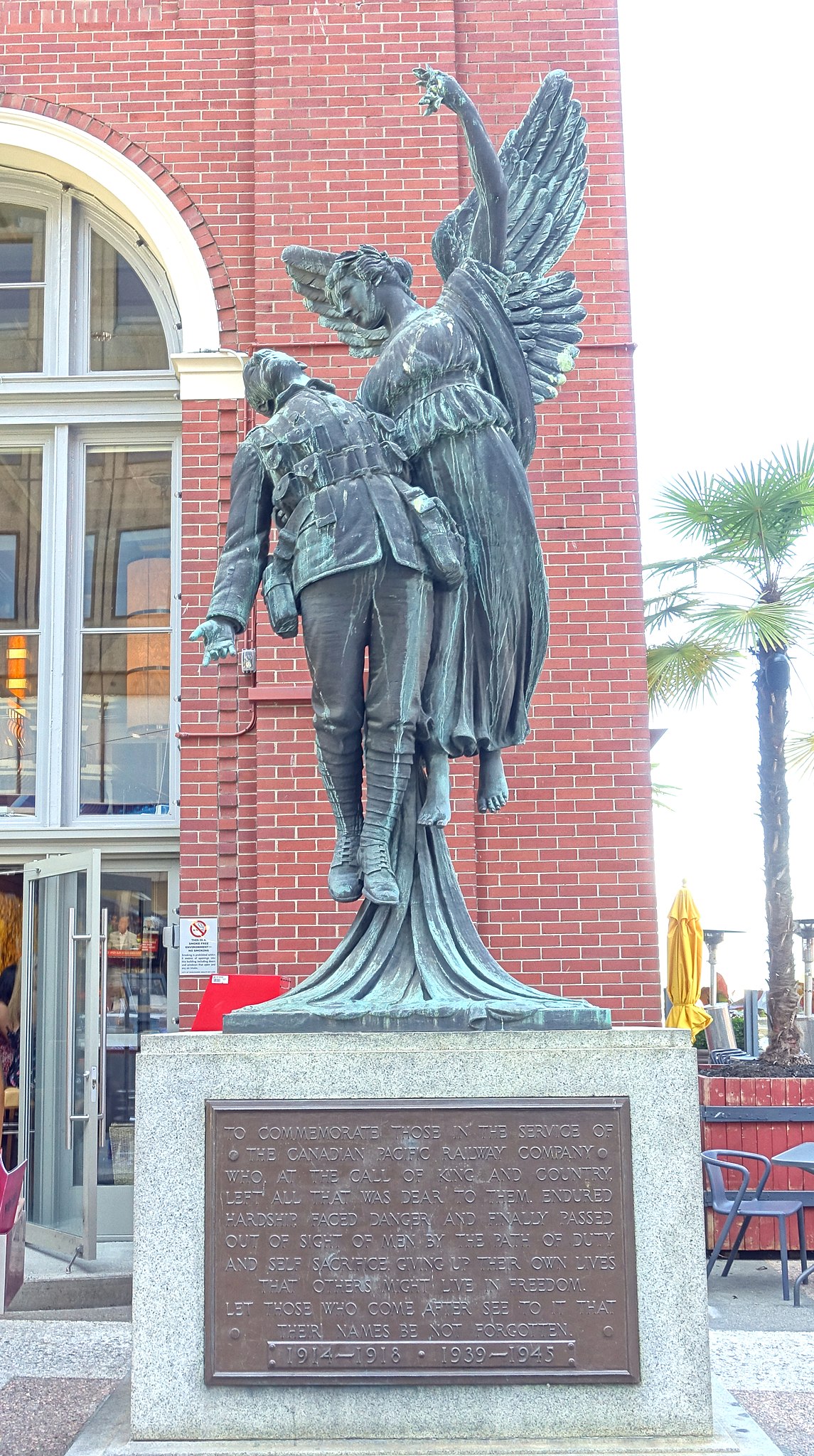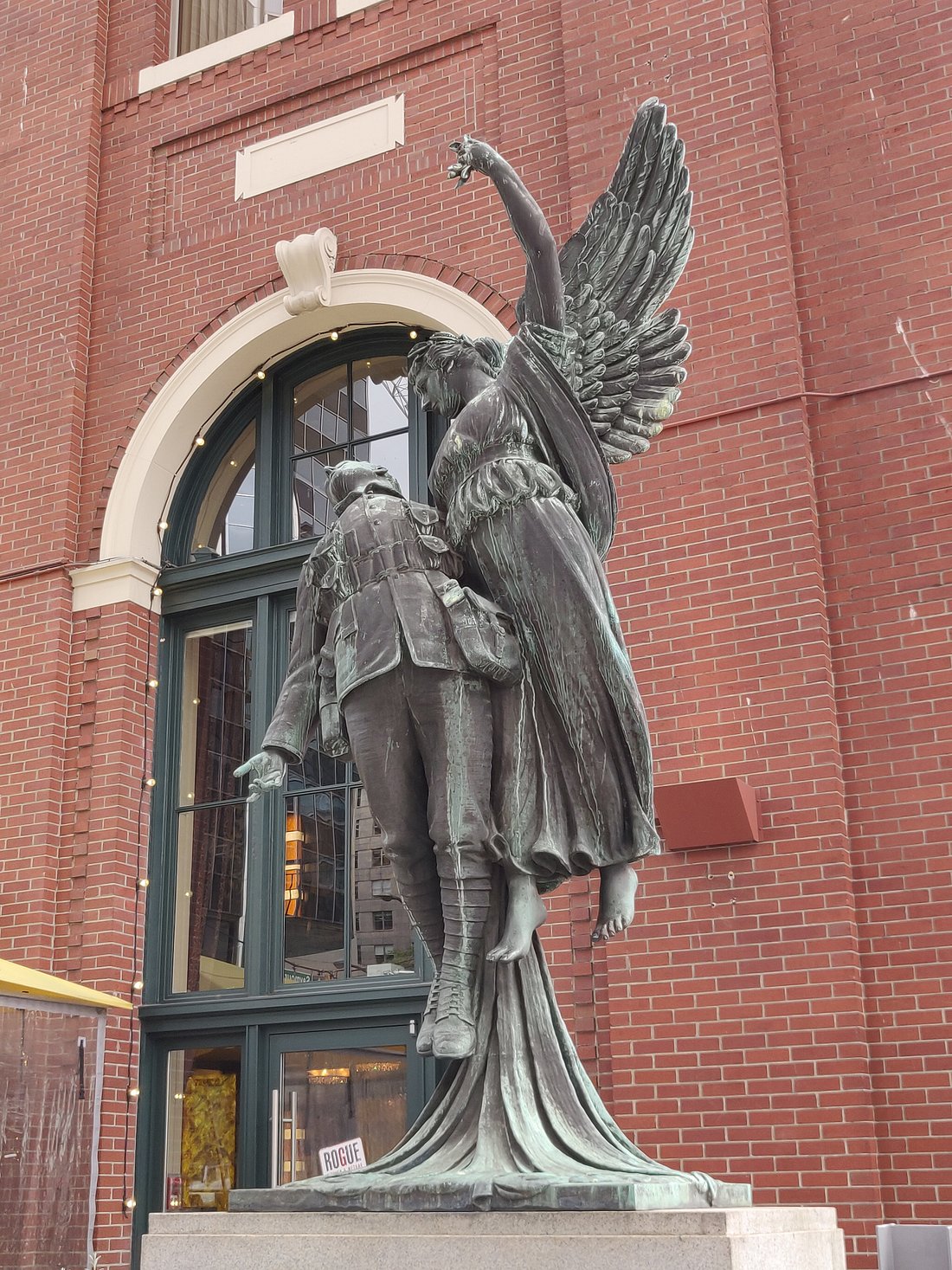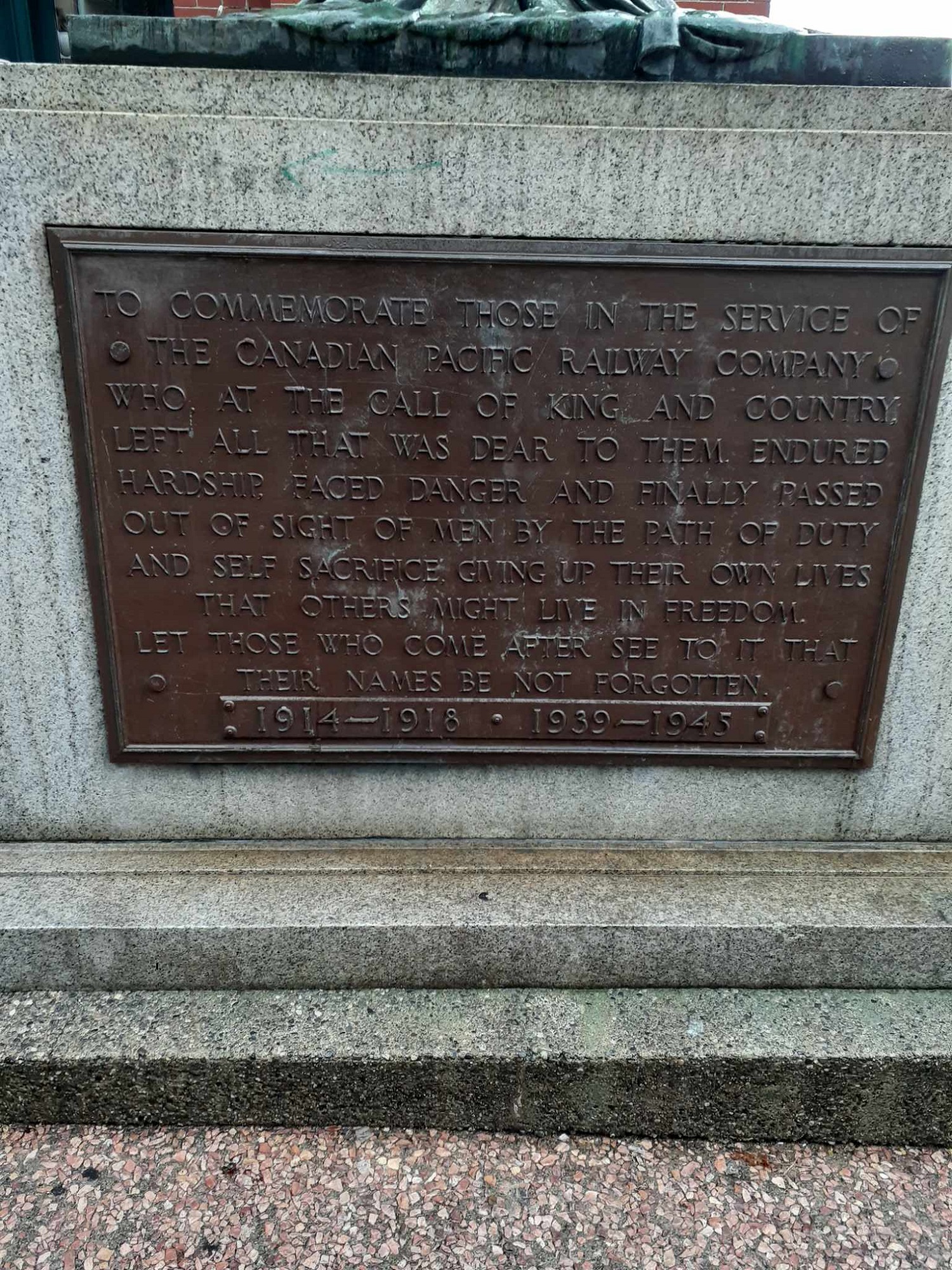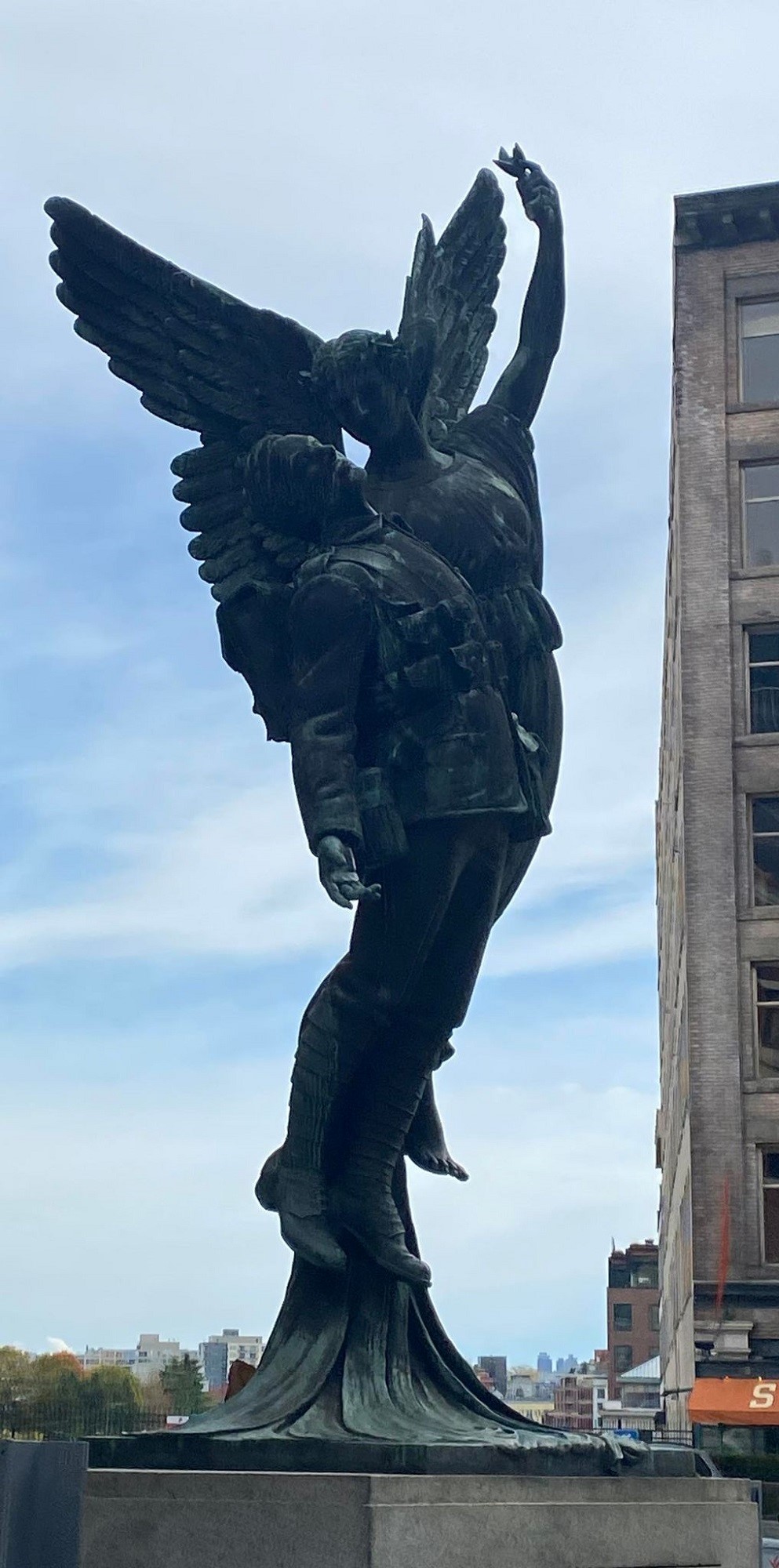Winged Victory was erected by the Canadian Pacific Railway in the memory of its employees who were killed during the First World War. It was unveiled by Lieutenant-Governor of British Columbia, W.S. Nichol on 28 April 1922.
The Canadian Pacific Railway commissioned three Winged Victory statues from Montreal sculptor Coeur de Lion MacCarthy to commemorate the 1,116 employees it lost in the First World War. All three statues were unveiled simultaneously on the same date. The statue depicts an angel carrying a deceased soldier to heaven at the moment of his death. The angel originally held a laurel wreath, the symbol of victory, in her upraised hand. The other two identical memorials are in Montreal and Winnipeg.
After the Second World War, the dates 1939 - 1945 were added.
When bronze is placed outside, like this statue is, over the years it gradually acquires a patina. Exposure to air gradually changes the bronze to green; sea air and pollution hasten the process. Rain, saturated with chemicals, shows up as streaks on the bronze. Such a patina is either valued or, if not appreciated, can be prevented from the beginning by regularly washing and waxing the statue. In 1967, some concerned citizens were horrified by what they called a "dirty" statue and with wire brushes and detergent tried to scrub the dirt off. Scratch marks from their cleaning tools can still be seen.
Coeur de Lion MacCarthy, the son of sculptor Hamilton McCarthy, produced numerous commemorative works after the First World War, including: Winged Victory in British Columbia; Great War Memorial and Lethbridge Cenotaph in Alberta; Winged Victory in Manitoba; County of Brome War Memorial, Verdun Victory Memorial, Monument to the Brave and Winged Victory in Quebec; Clifton Hill War Memorial and Woodstock Cenotaph in Ontario.



